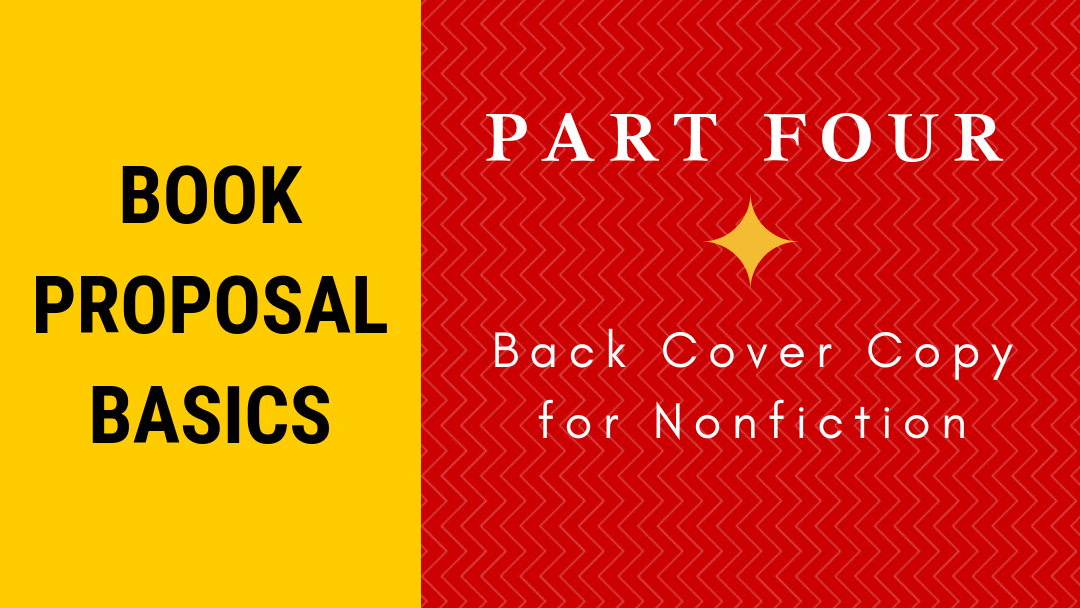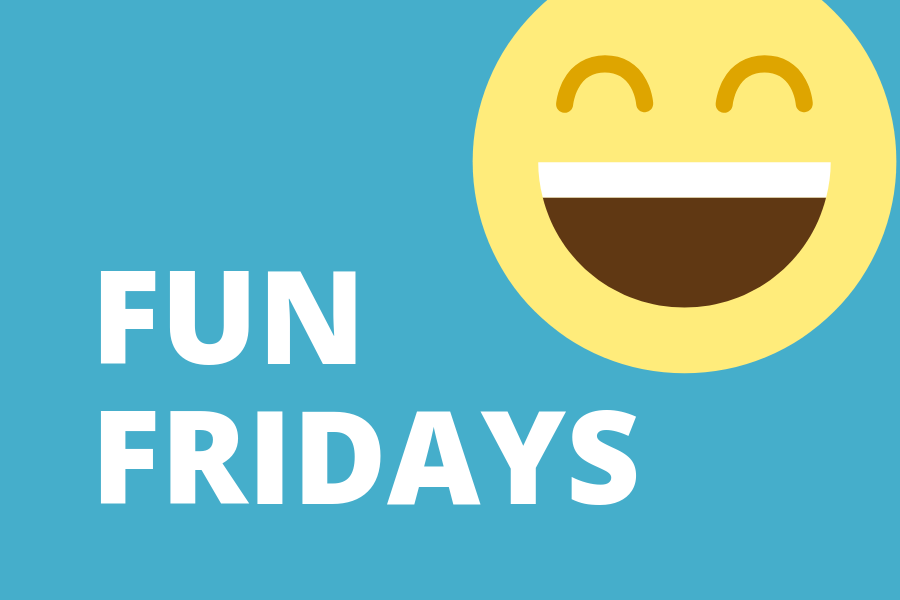Last week we talked about writing back-cover copy for fiction. As you can imagine, writing back-cover copy for nonfiction is a different exercise. The purpose here is not to hook your reader into wanting to read a story, but to show the reader why your book will be helpful specifically to him. The nonfiction reader is not looking to escape reality, but to make her life better. Life can be made better through increased knowledge as offered by such works as academics and biographies, devotional reading, or self-help. We’ll look at how to write self-help back-cover copy today, although this format is useful for all works of nonfiction.
The Need
The first paragraph tells the reader about the problem the book addresses. Let’s say the reader desires a closer relationship with Jesus. First, the author will want to convey why the reader needs this book.
Do you feel your spiritual life is dry? Are your prayers unanswered? Do you wonder how other Christians seem to have a hotline to God while you flounder?
Authority and Method
The second paragraph can say who is writing the book and on what authority. This portion can also explain the method you will find in the book to help you.
Dr. Alberta Patience, a bestselling author and Christian counselor for more than thirty years, not only has helped others find help through a renewed relationship with Christ, but also experienced dark times as she lost her husband to suicide and her 20-year-old son to cancer. She felt her own life was bleak until she reinvigorated her relationship with Christ using The Five Bible Points™ .
Reason
This portion incites the reader to make the purchase.
The Five Bible Points™ will inspire you to revitalize your most essential and eternal relationship – the one you have with the Lord. By returning daily to The Five Bible Points™, you will feel refreshed, strengthened, and courageous throughout any journey.
While your profile and experience will be unique to yourself, as you write your back-cover copy for your nonfiction book, think about what you bring to readers. And write it!
Your turn:
What spurs you to purchase a nonfiction book?
Would you prefer to read a book by a bestselling author or an unknown who has been in your situation and conquered it?
What is your favorite nonfiction book?
__________
 Steve Laube has a course on book proposals at The Christian Writers Institute that includes a one-hour lecture, a short ebook on the topic, and sample proposal templates. Click here for more information.
Steve Laube has a course on book proposals at The Christian Writers Institute that includes a one-hour lecture, a short ebook on the topic, and sample proposal templates. Click here for more information.



 Details Are Great Except When They’re Not
Details Are Great Except When They’re Not

Tamela, I appreciate that you’ve separated the discussion of back-cover copy for fiction versus nonfiction. To me, they’re very different worlds.
I read nonfiction almost daily and am always on the hunt for something good. My eyes roam across all territories here, unlike fiction where I’m looking for something very specific, very limited genres.
Nonfiction needs a compelling, explicitly-stated offer. What, exactly, are you claiming I’ll learn after reading your book? How could my life be different after applying your thoughts to my own?
Back-cover copy helps me sort the relevant from the irrelevant reader reviews as well. Just yesterday I was on Goodreads where I picked a book by Lisa Bevere (one of my favorite authors and speakers) for my Want to Read list. Some of the most recent reviews were very negative but completely irrelevant because the people clearly didn’t know this was a Christian book. Did they even read the offer? Likewise, I’ve seen some stunning reviews for nonfiction that had nothing to do with what the back-cover copy said I would get out of the book. So why would I pay any attention to those reviews?
With nonfiction, my biggest hurdle is this: What is the book claiming to offer and does it deliver? Even if the writing isn’t great, that’s not nearly as important as the message. Exception: I absolutely hate when authors use obscenities no matter how smart other people think they are. Instant credibility destruction.
You pose some great questions for authors to think about as they write promos, and your comments on reviews are excellent. Thank you for stopping by and for sharing!
Tamela, thank you for the example you provided for the back cover for nonfiction. I select nonfiction books that meet my desired topic, the person has survived a situation close to mine, and then the author. I’m especially happy if the author is one I recognize, but it’s not my priority. I read the back cover, and you’re correct. All of the above must show me this is the book for me.
Thank you for your encouragement!
My book will answer every question
concerning X and Y and Z,
and will make a great selection
to place beneath the Christmas Tree.
I’m fully qualified for this;
I’ve been most everywhere,
from private war to stolen kiss,
from Zanzibar to Berkeley Square
The things you sought to understand
will find fulfillment in these pages
and you’ll be admired in all the land
as one with wisdom of the ages.
So buy, and perform your highest duty:
supporting my life of wealth and beauty.
Extra points for the first to find the 60s Easter Egg.
Did I say points? Sorry, I meant pints.
Ha ha — I spotted the TV rerun jewel! Nice job!
Thank you for this article, Tamela. I found this website a few days ago and I’m impressed by the wealth of helpful information shared here.
I love autobiographies and memoirs that help me in my relationship with God. When I read your question, “What is your favorite nonfiction book?” I immediately thought of a story I first read in 2014, after I had just come through a 3-year-long personal and legal battle. The book is The Hiding Place, by Corrie ten Boom, Elizabeth Sherrill, and John Sherrill. Although the circumstances were different, there was much that resonated with me. I hope my own story will have a similar positive impact on those who choose to trust God in seemingly hopeless situations.
I look forward to your future articles.
Thank you for the kudos, and for the great book recommendation! Enjoy exploring our site!
Tamela,
My favorite non-fiction books are still Doris Kearnes Goodwin’s “Team of Rivals” about Lincoln and his Cabinet, Rick Warren’s “The Purpose Driven Life,” and Chuck Swindoll’s “Improving Your Serve.” All authors had established expertise. I just finished the highly controversial 2018 NYT bestseller, “White Fragility.” Difficult read with big gaps in logic and subjective viewpoint primarily based on her interpretations of her own personal experiences, then generalized to fit everyone else–glad I read it, but definitely not a favorite.
My most recent non-fiction purchase was “New Philadelphia,” about the first US town founded and platted by an African American, located in the next county south of mine. I love local history and the back cover showed that the authors had relevant credentials–one a descendent of the town’s founder and both university professors.
Your questions prompted me to look critically at what books I buy and why. I realized that I may be in the minority, but I prefer an expert or researcher’s teaching or recounting, or a well-written complete (auto)biography, rather than particular personal experience stories. I’m editing a first-time Christian author’s “how-to” book now and have been trying to gently steer him into adding some scholarship to support the points of his numerous and exclusively experiential examples. Now I see that my editing approach is consistent with what I like to read, but maybe my author writes what HE likes to read and his target audience will like it, too. Hmm. You always make me think! ?
What great observations, Linda! Based on your comment, you are giving the writer excellent advice. I believe self-help and how-to books need a balance of anecdotes to show readers they can relate to the premise, then show how and why the book’s information is helpful. For instance, if I write that eating oatmeal three times a day increases productivity (I’ll never know because I don’t eat oatmeal much!), I would open by saying that before eating oatmeal, I wrote 1,200 words a day, but after acquiring this habit, I now write 10,000 words a day, and so I’d like to share my journey with you and you, too, can write 10,000 words a day. If I presented the statistics without the story, though, readers would miss out on my personal journey, and as a result, miss the heart of the book — the “why” I wrote it. I do agree that some self-help books have too much “why” and not enough knowledge on how the reader will benefit from learning the story. Self-help and how-to should not veer too much into autobiography.
I think as long as authors are honest about their approach, readers should be pleased with their selections. I can visualize you choosing a scholarly biography called, “The Senator’s Lifelong Fight Against Poverty” rather than, “My Fifth Husband — He Was a Bum.” Both books have audiences — I suspect unless a person wants to be an expert on a particular celebrity, the audiences for these two biographies would have very little overlap!
You have made me think, too! I am going to check out the books you mentioned now!
Tamela, your post is enlightening and informative. Thank you.
I’m curious: which proposal format would best work for a piece narrative non-fiction that reads like a novel – a fiction or non-fiction-type proposal?
Based just on your question alone, I’d go with the nonfiction format. The book would be classified as nonfiction, so it would need to meet those audience expectations.
Thank you for this helpful post. There are so many types of non-fiction, it’s difficult to narrow down to favorites. I appreciated Soul Survivor: How Thirteen Unlikely Mentors Helped my Faith Survive the Church by Philip Yancey; Unbroken by Laura Hillenbrand; One Thousand Gifts by Ann Voskamp; A Million Little Ways, Emily Freeman; Moments With Majesty, Jack Hayford; Forbidden Grief, Theresa Burke. Each of these book contain many exquisitely written passages that stopped me in my tracks (in a good way) inviting reflection, inspiration, perspective adjustments, and motivation.
I just glanced at the back covers on each of these. Unbroken only has endorsement quotes with the other elements inside the flaps of the hardcover book; Moments With Majesty and One Thousand Gifts include the need and reason on the back, but the author info is on the inside flap of the hardcover; Soul Survivor contains all three elements, but not in the 1, 2, 3, format you’ve suggested; A Million Little Ways & Forbidden Grief have all three of the elements.
Should an author always write copy as if it’s a softcover with all three elements? And, I’m curious, what degree of importance do you place on an author photo on the back cover?